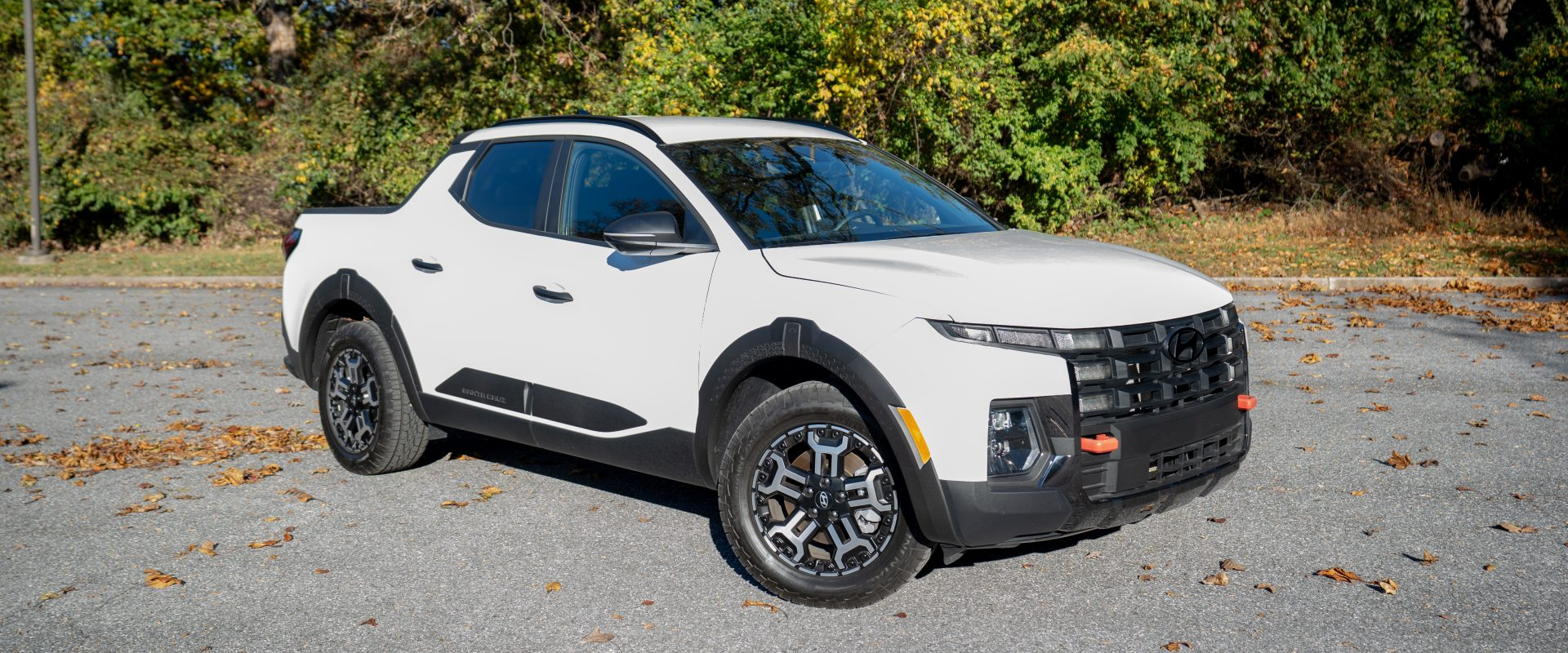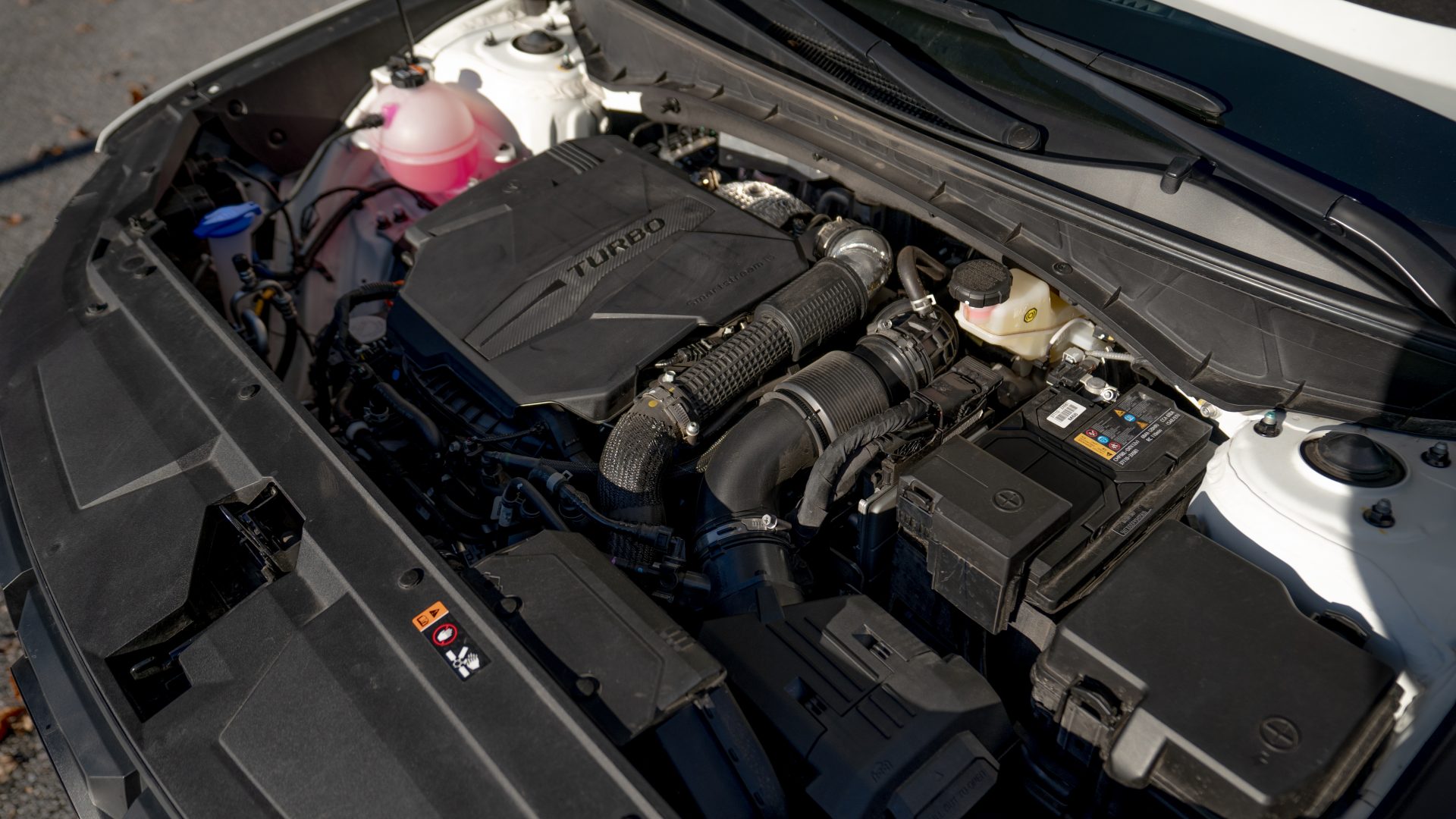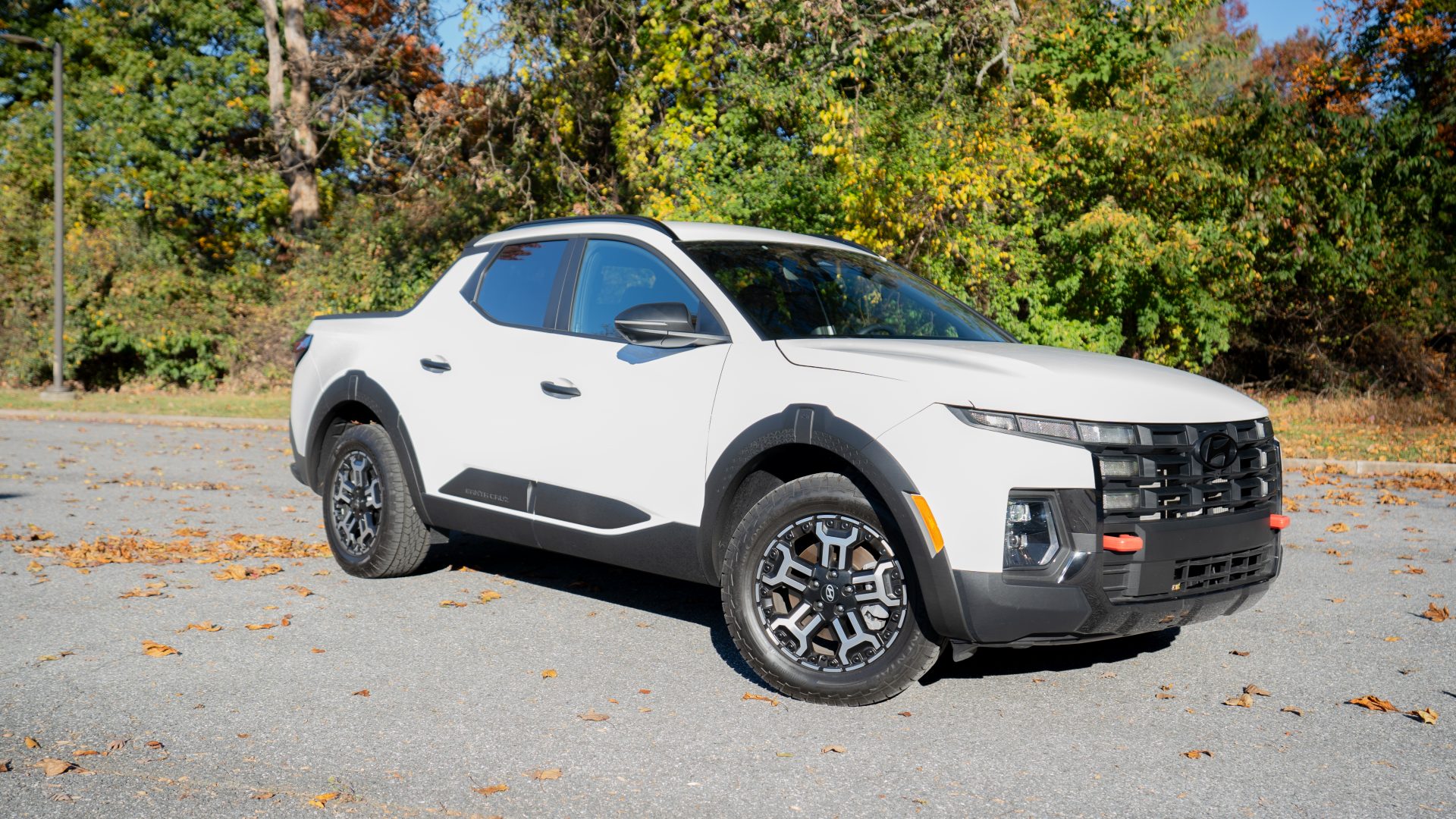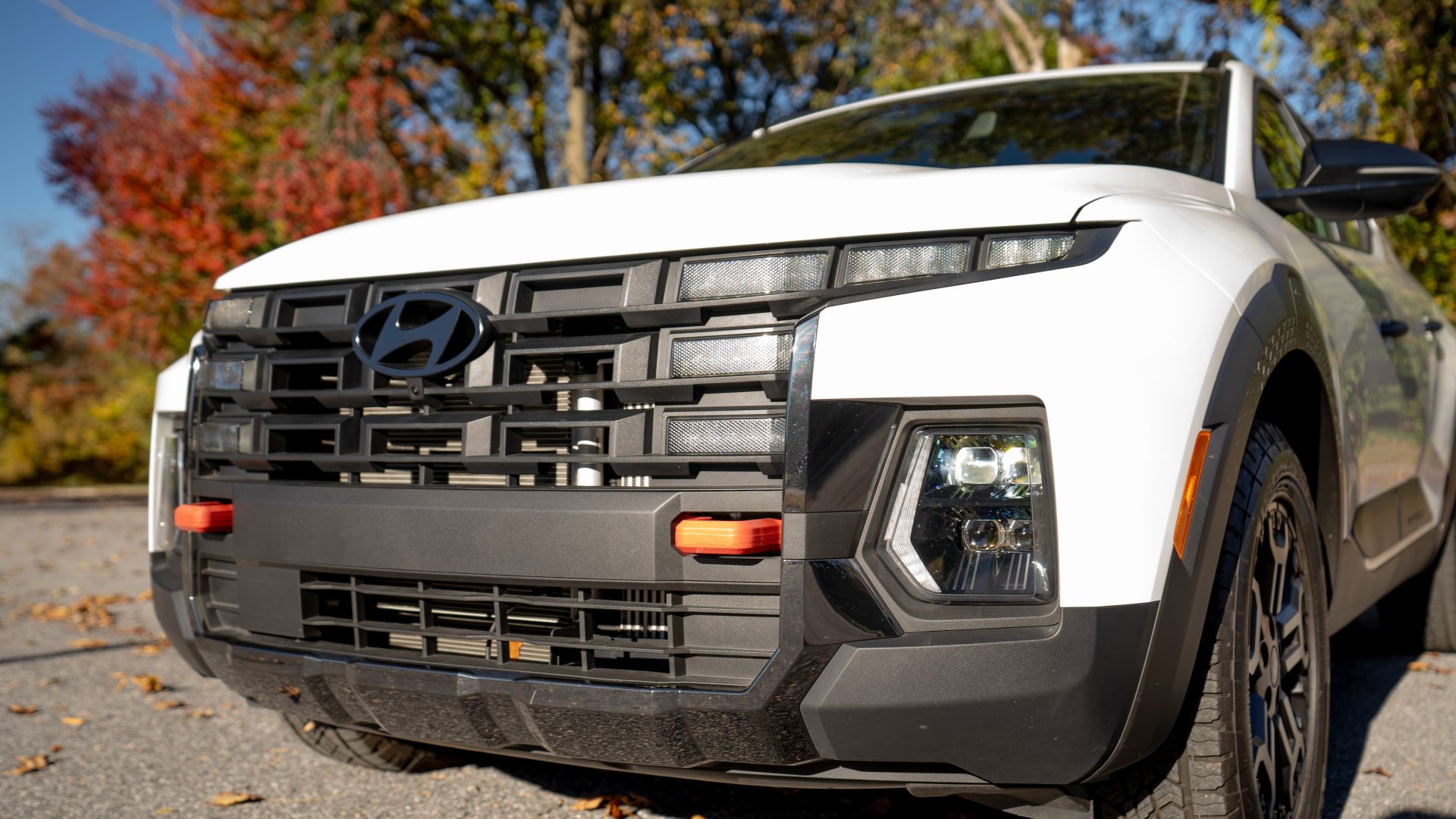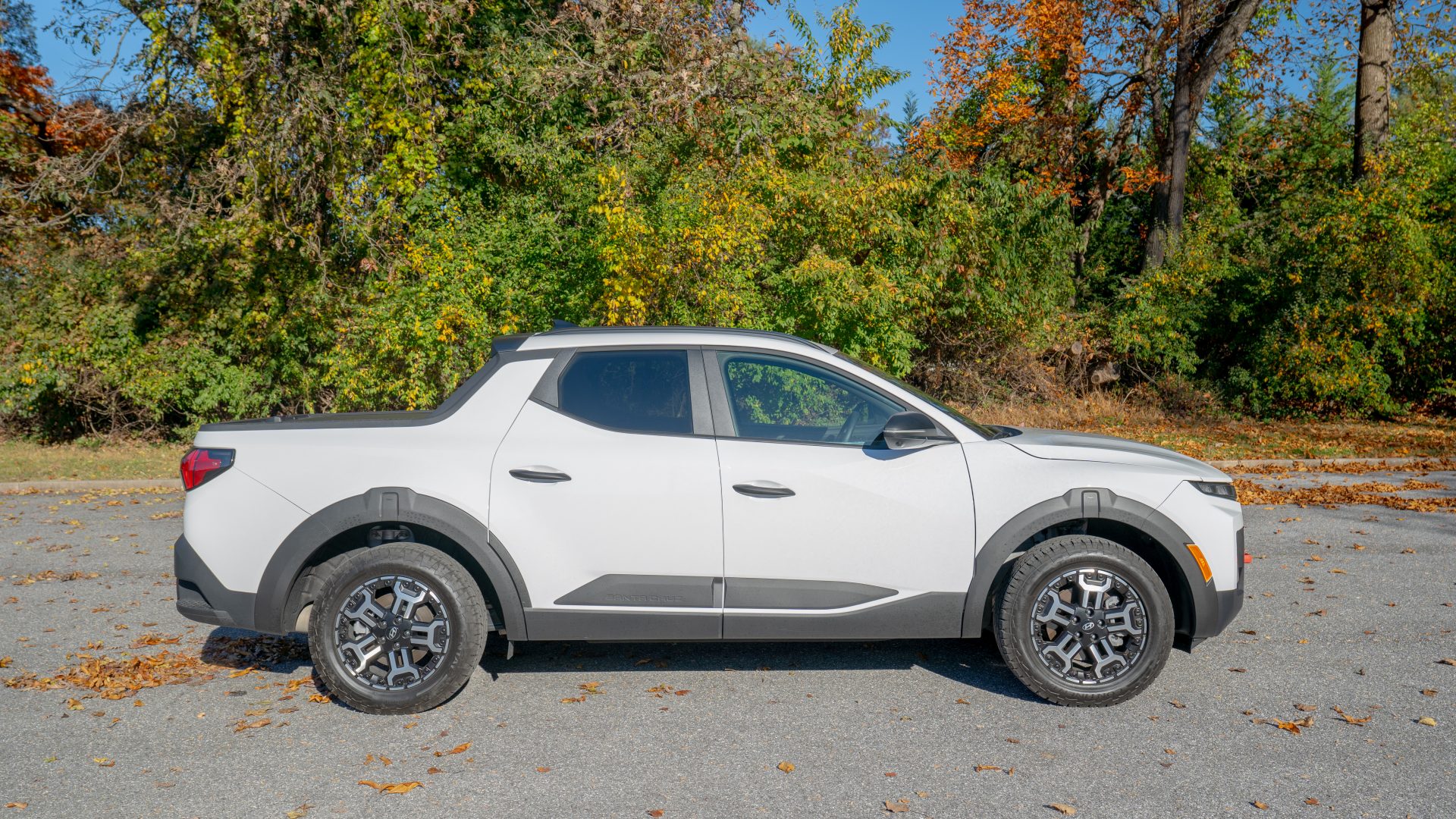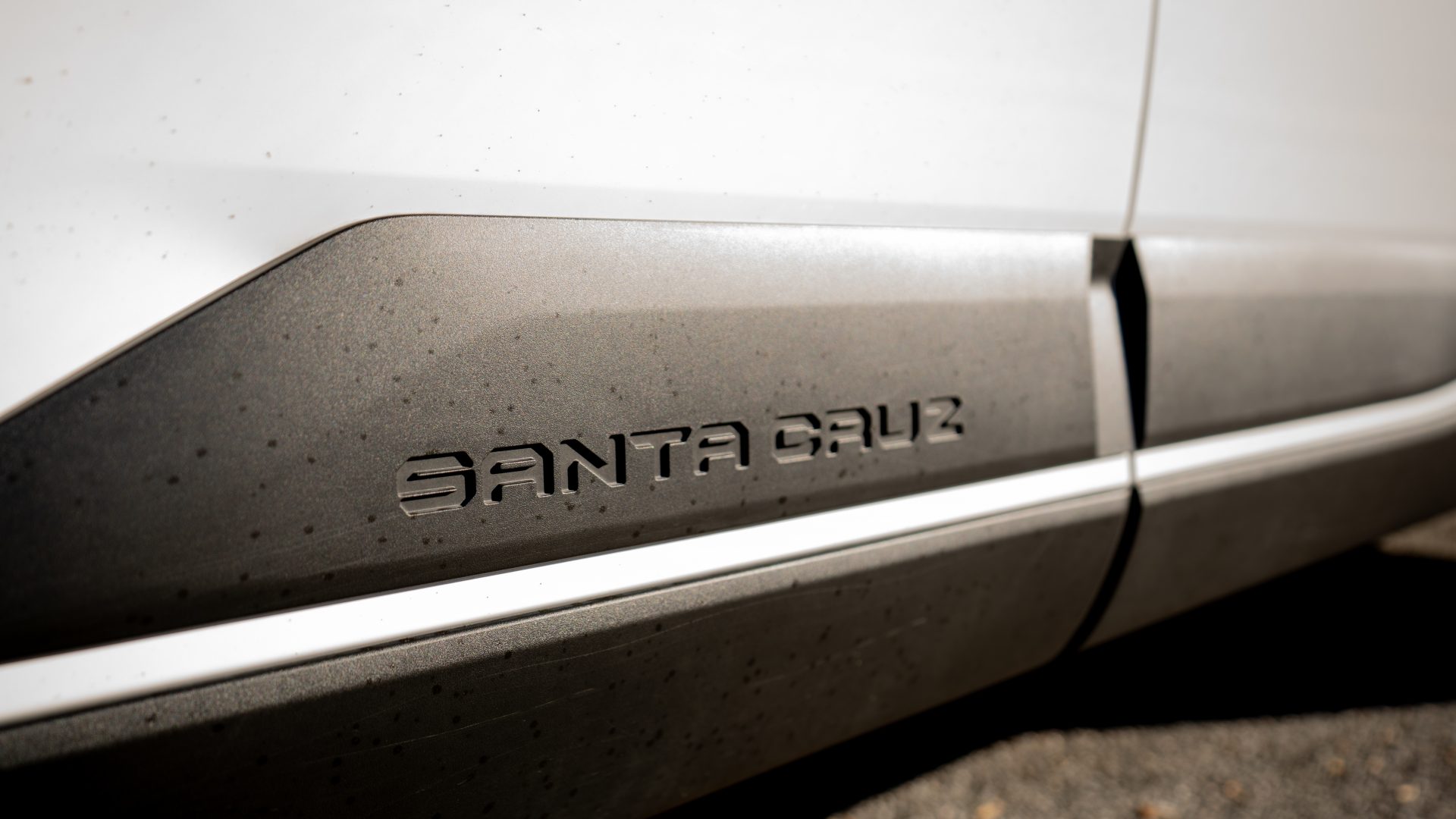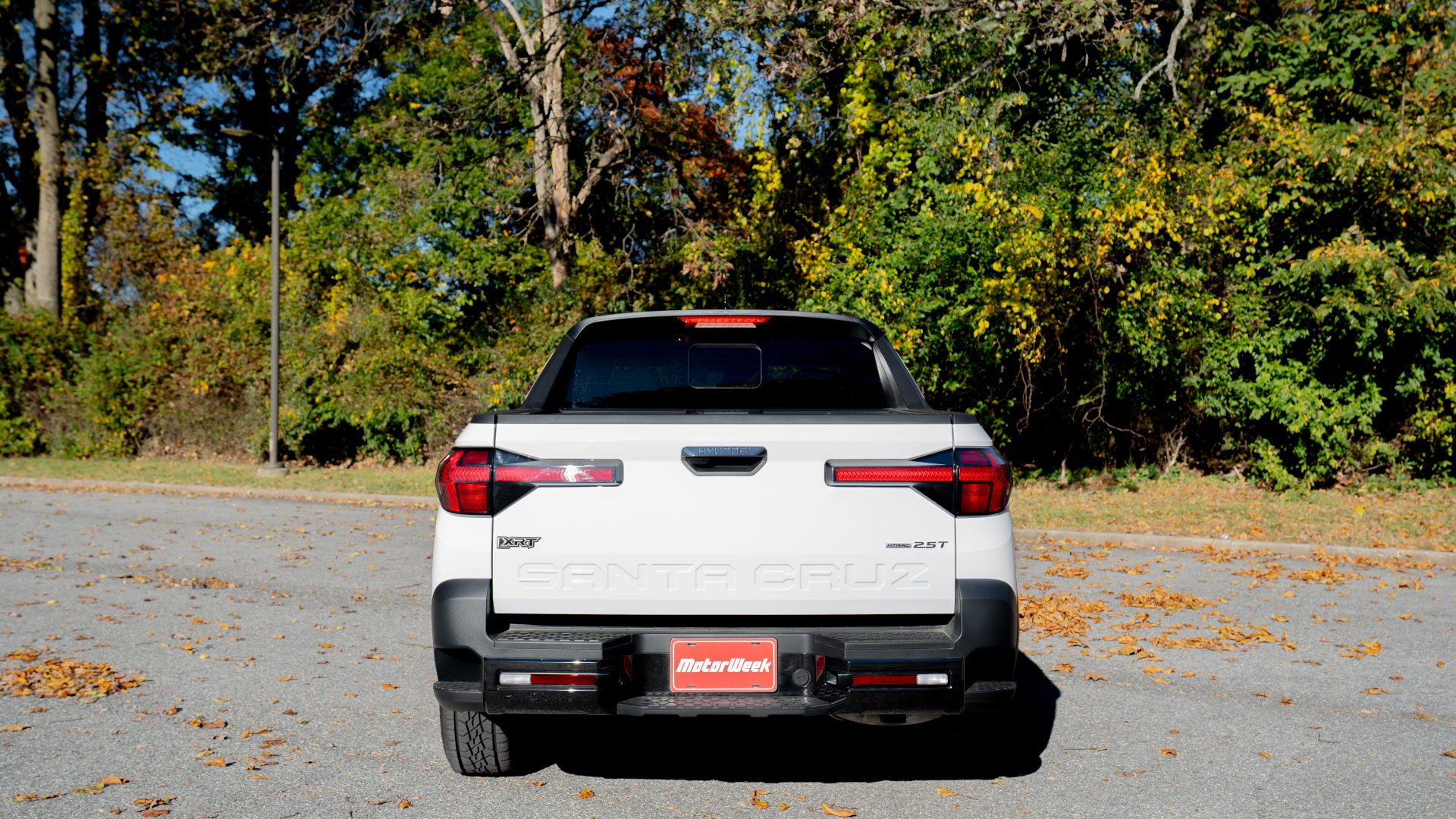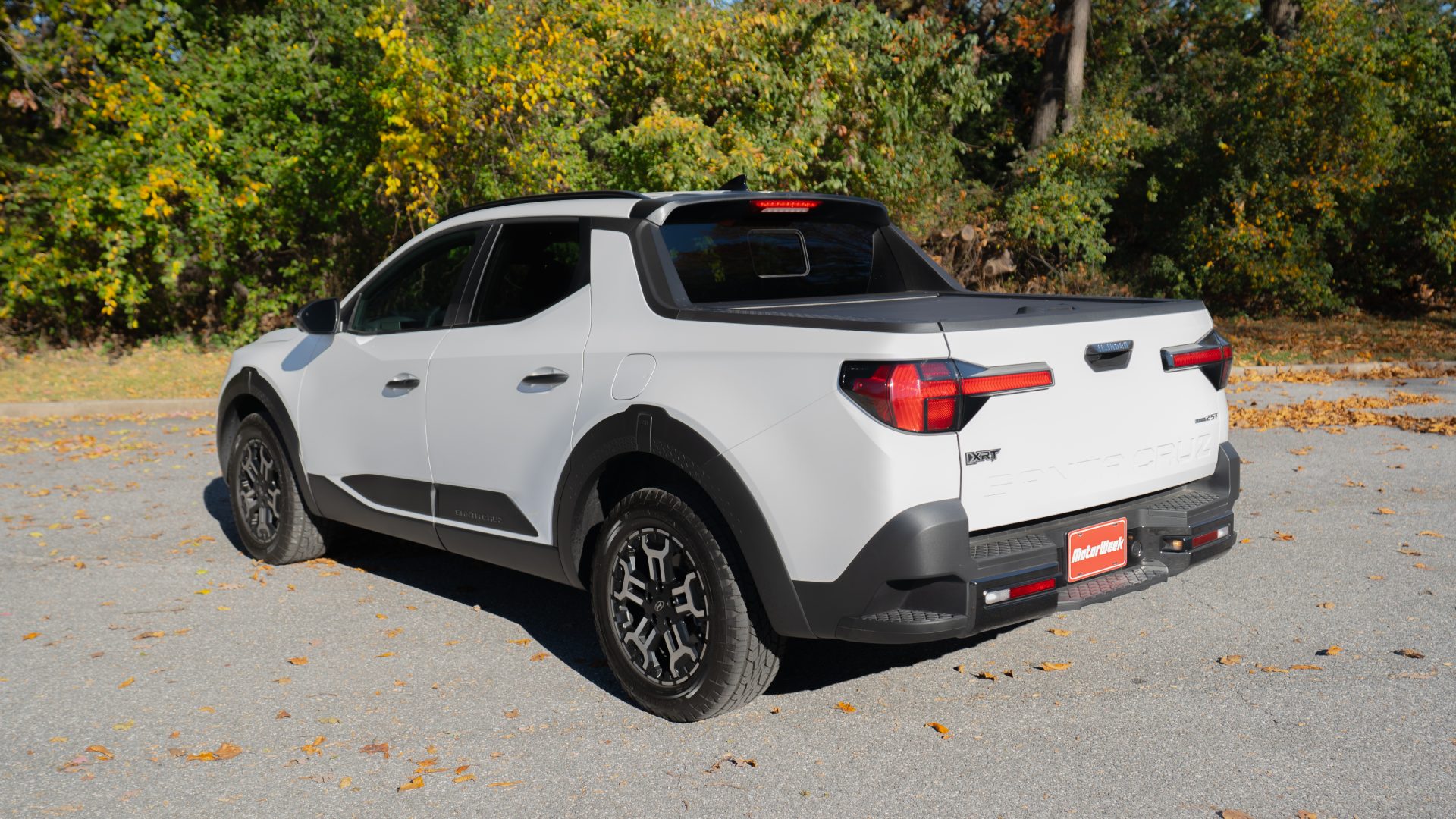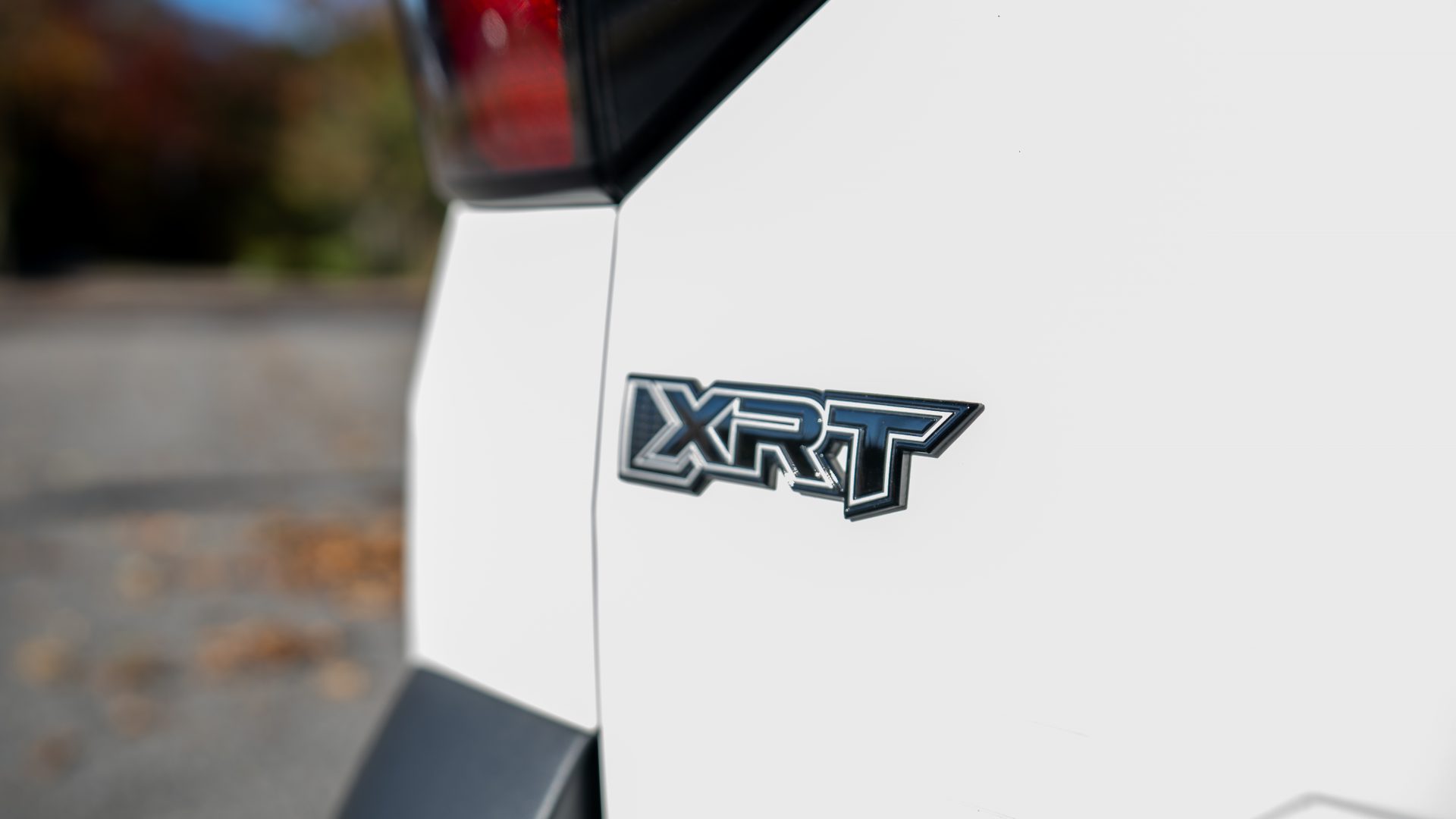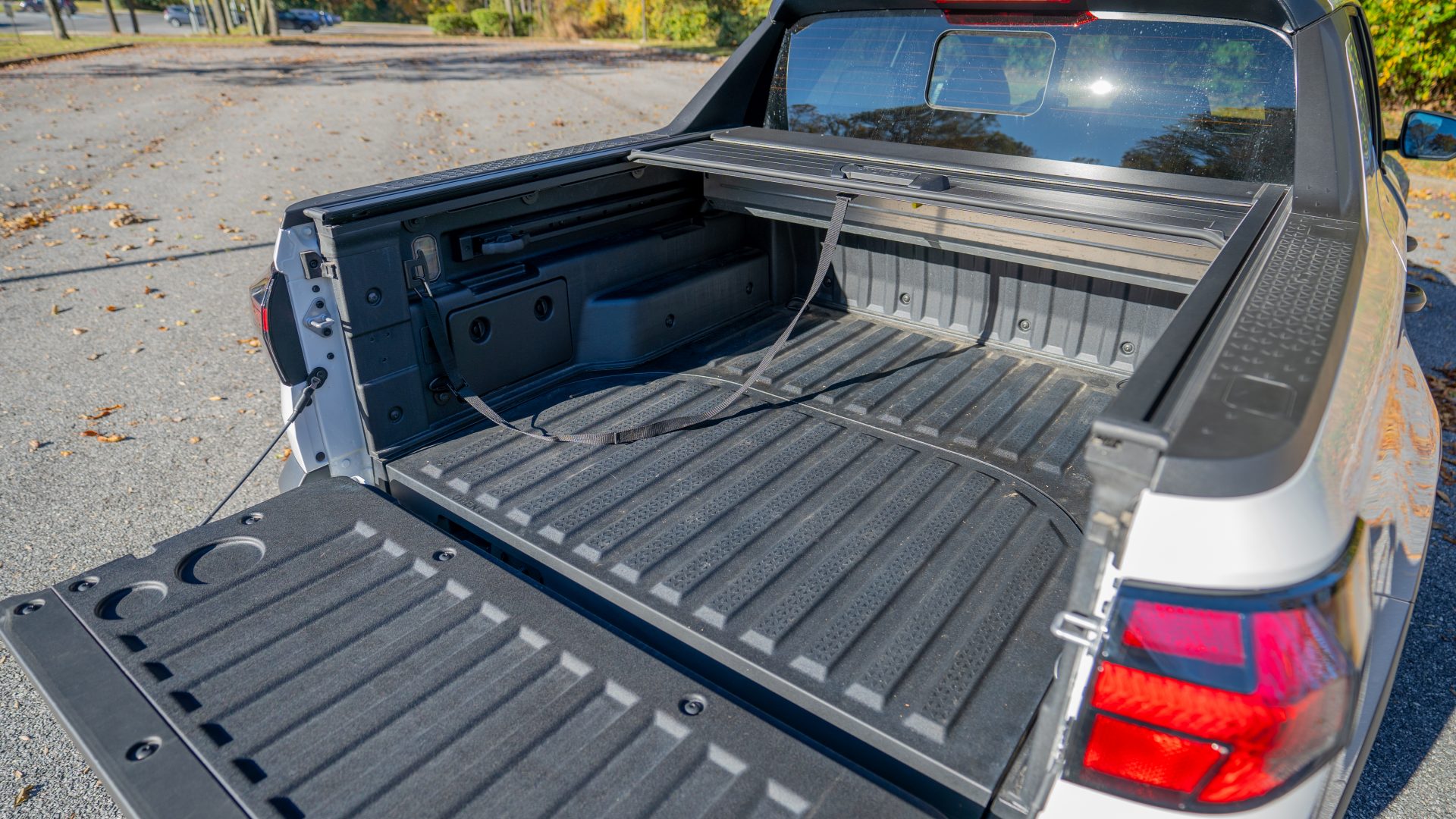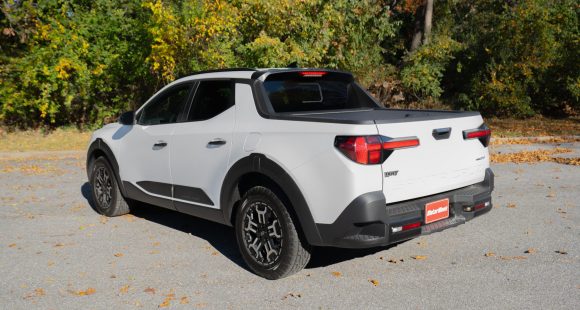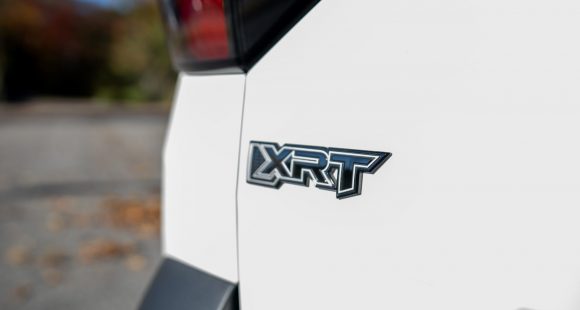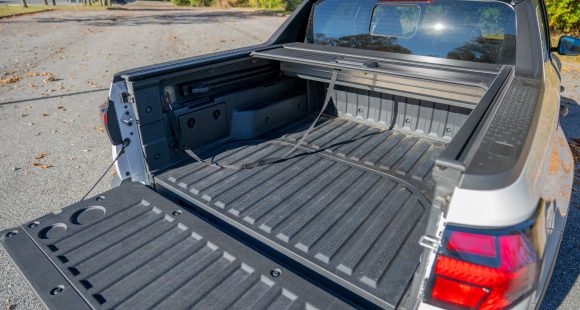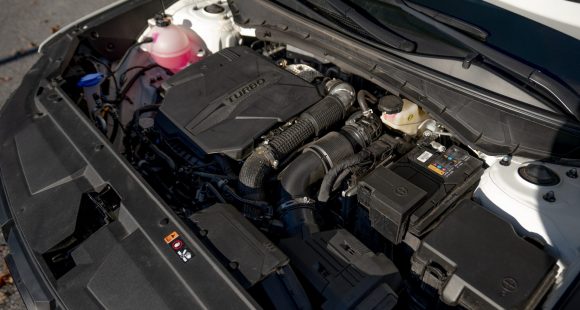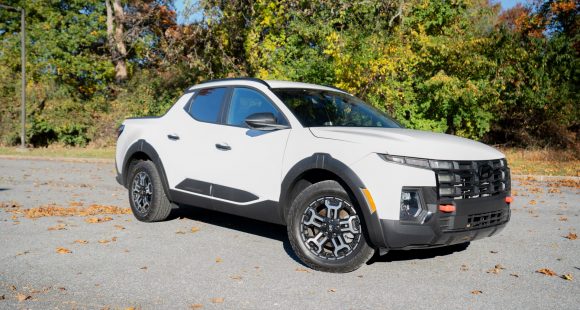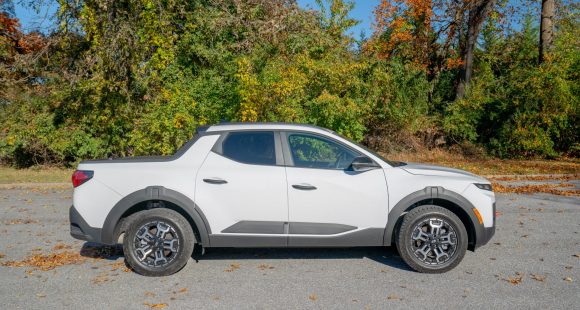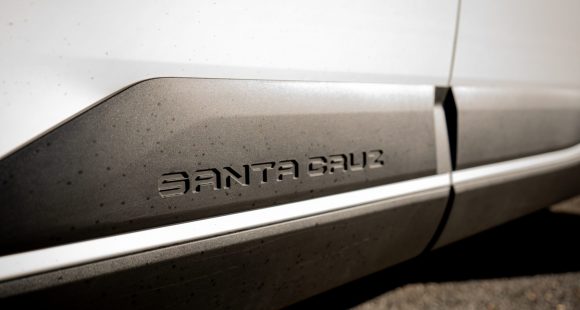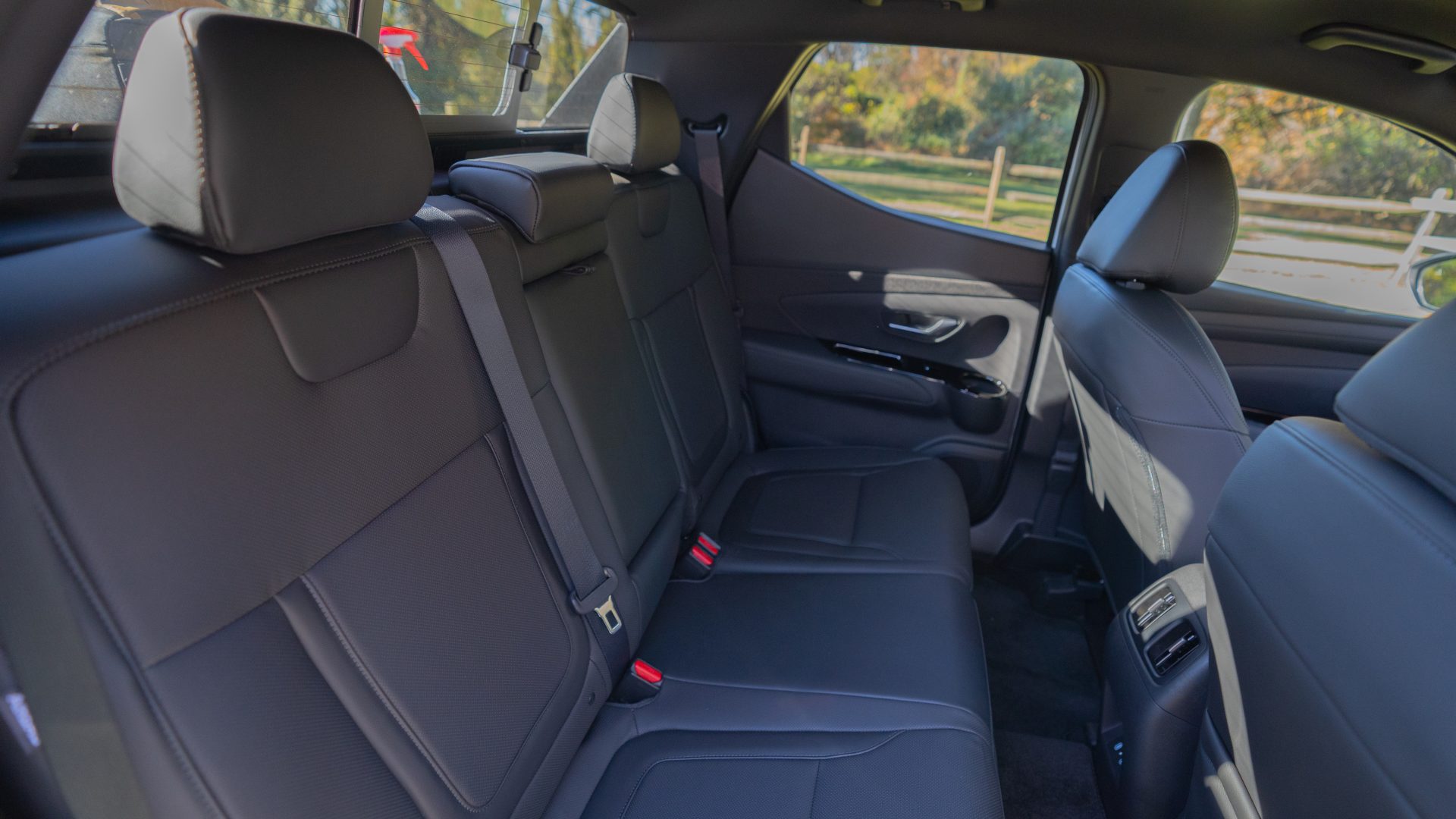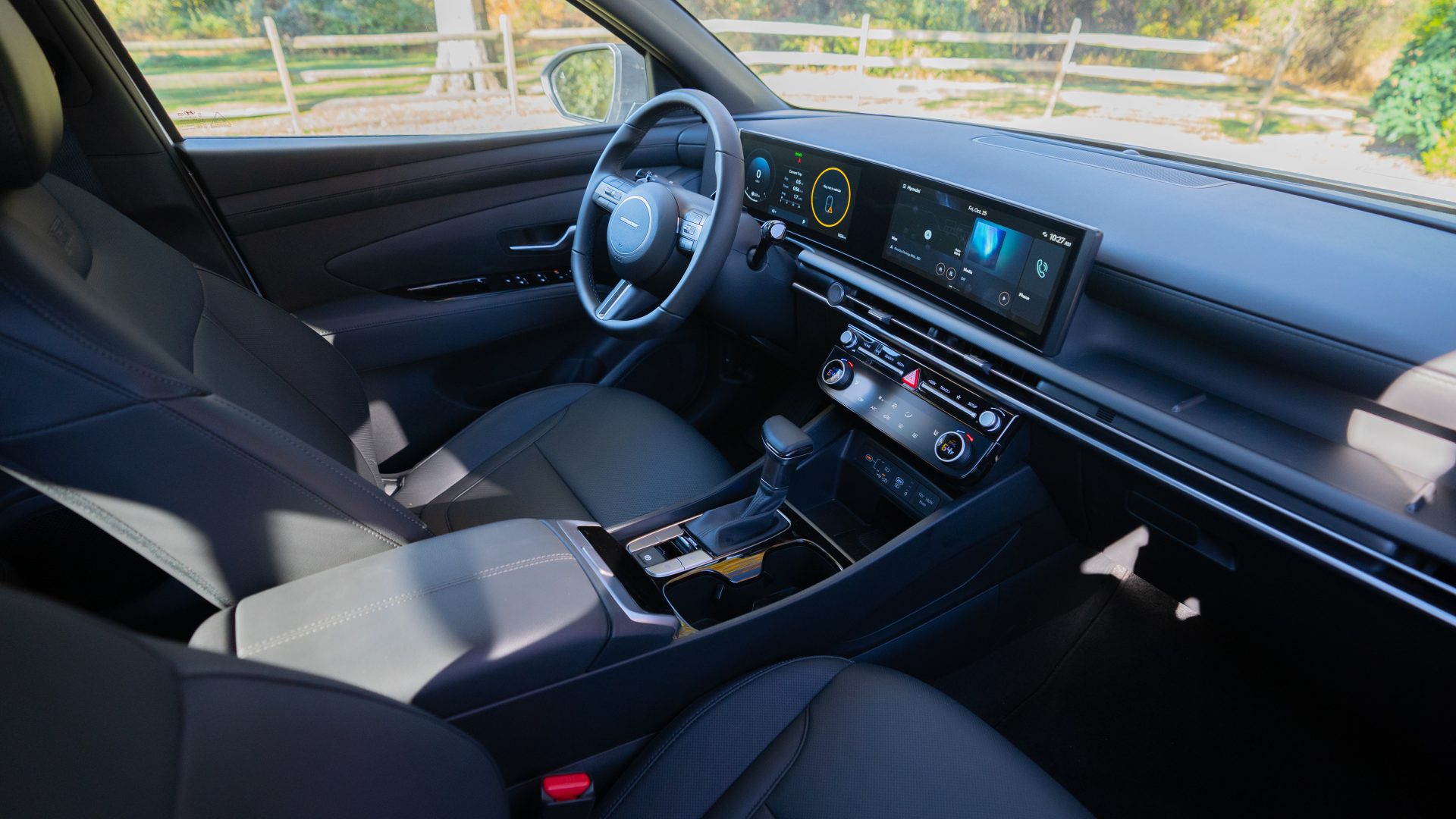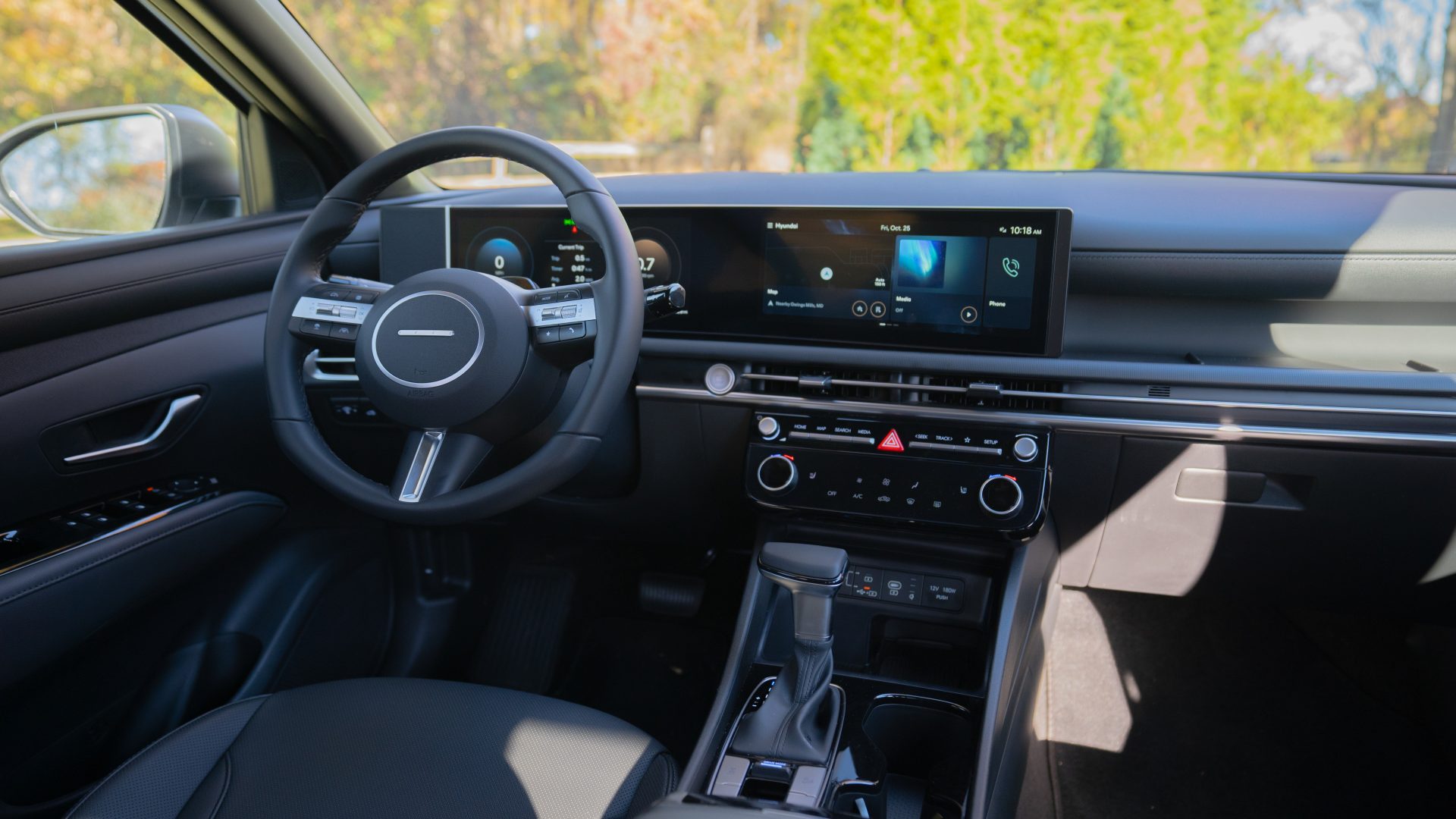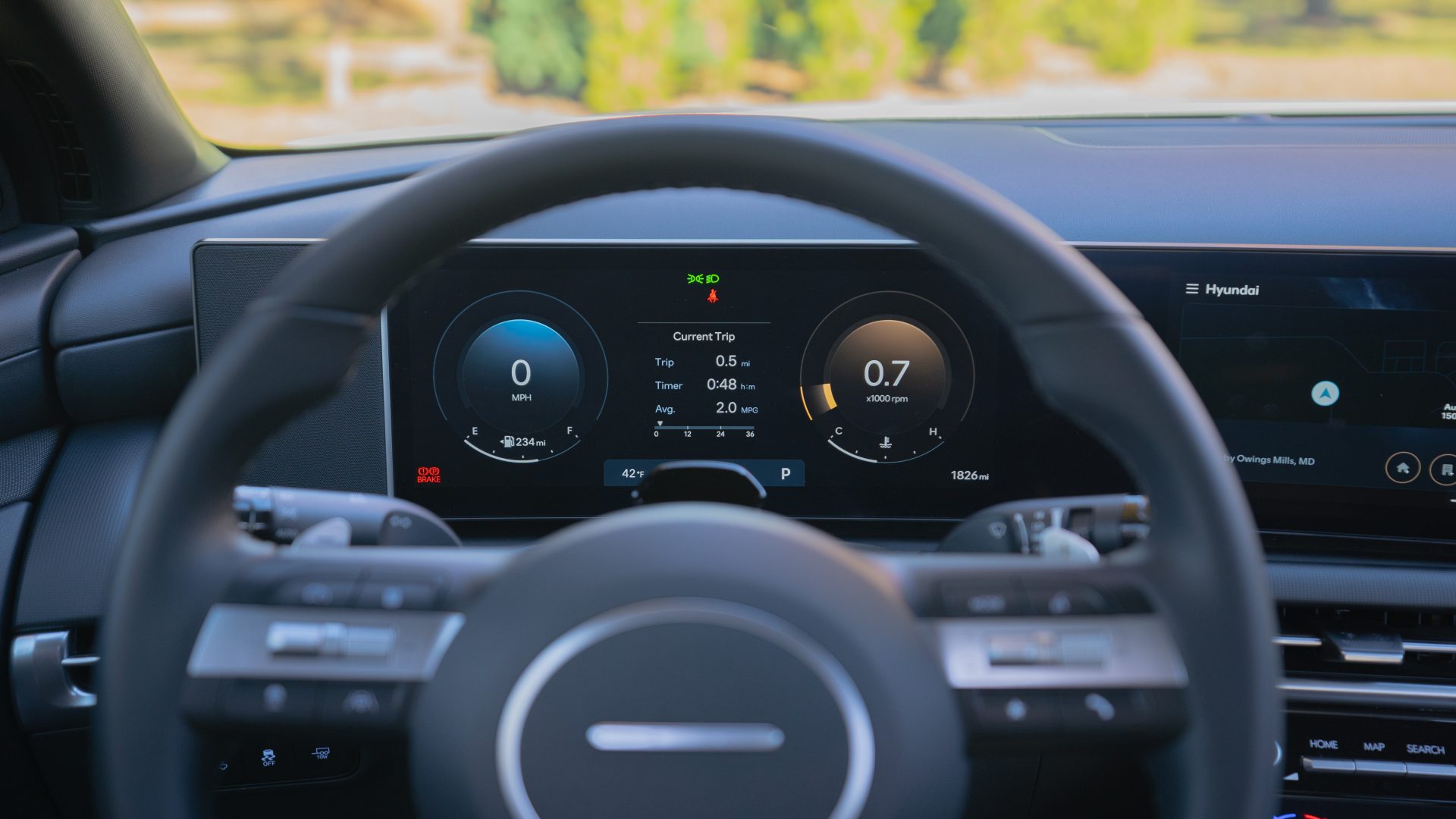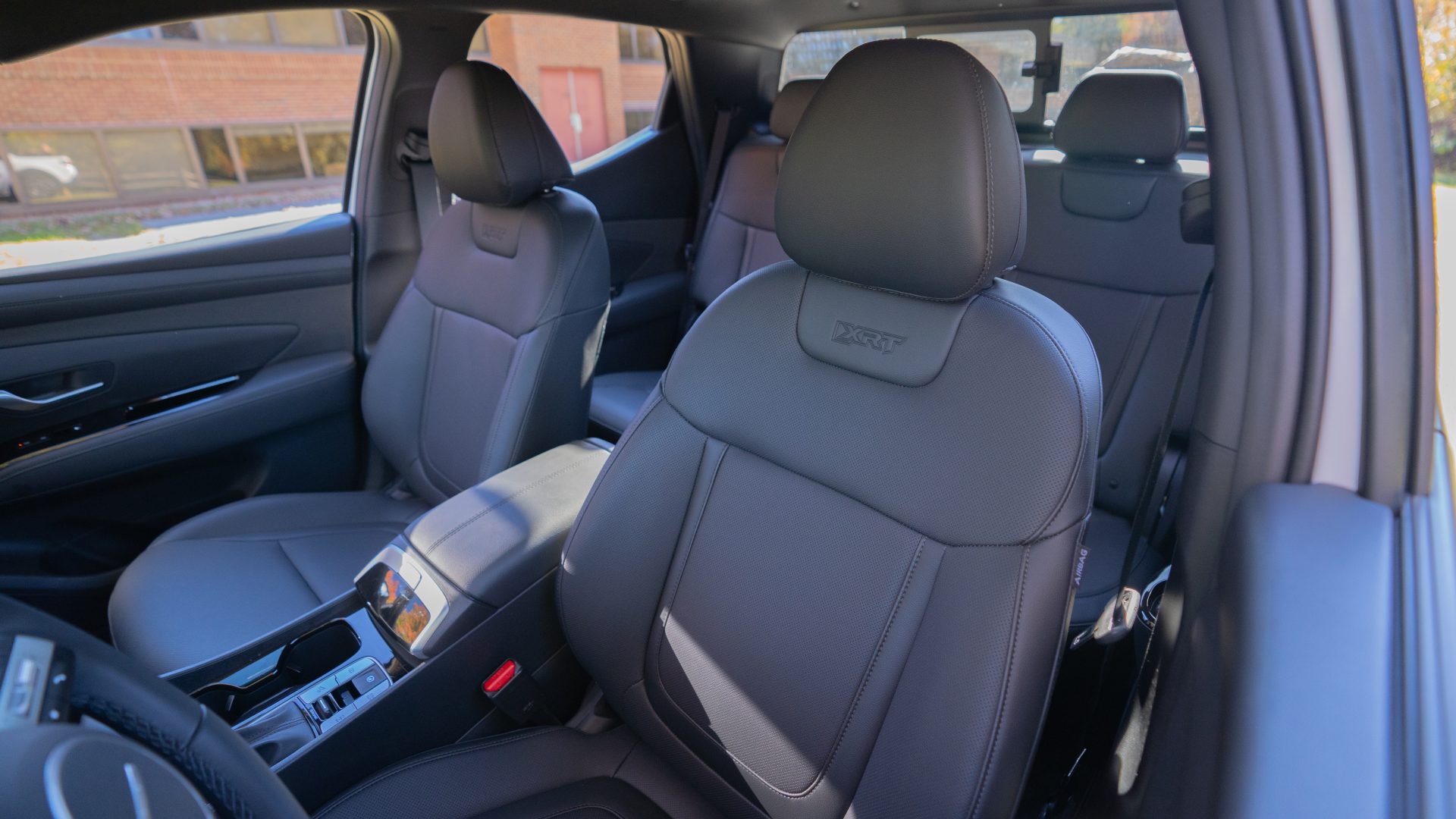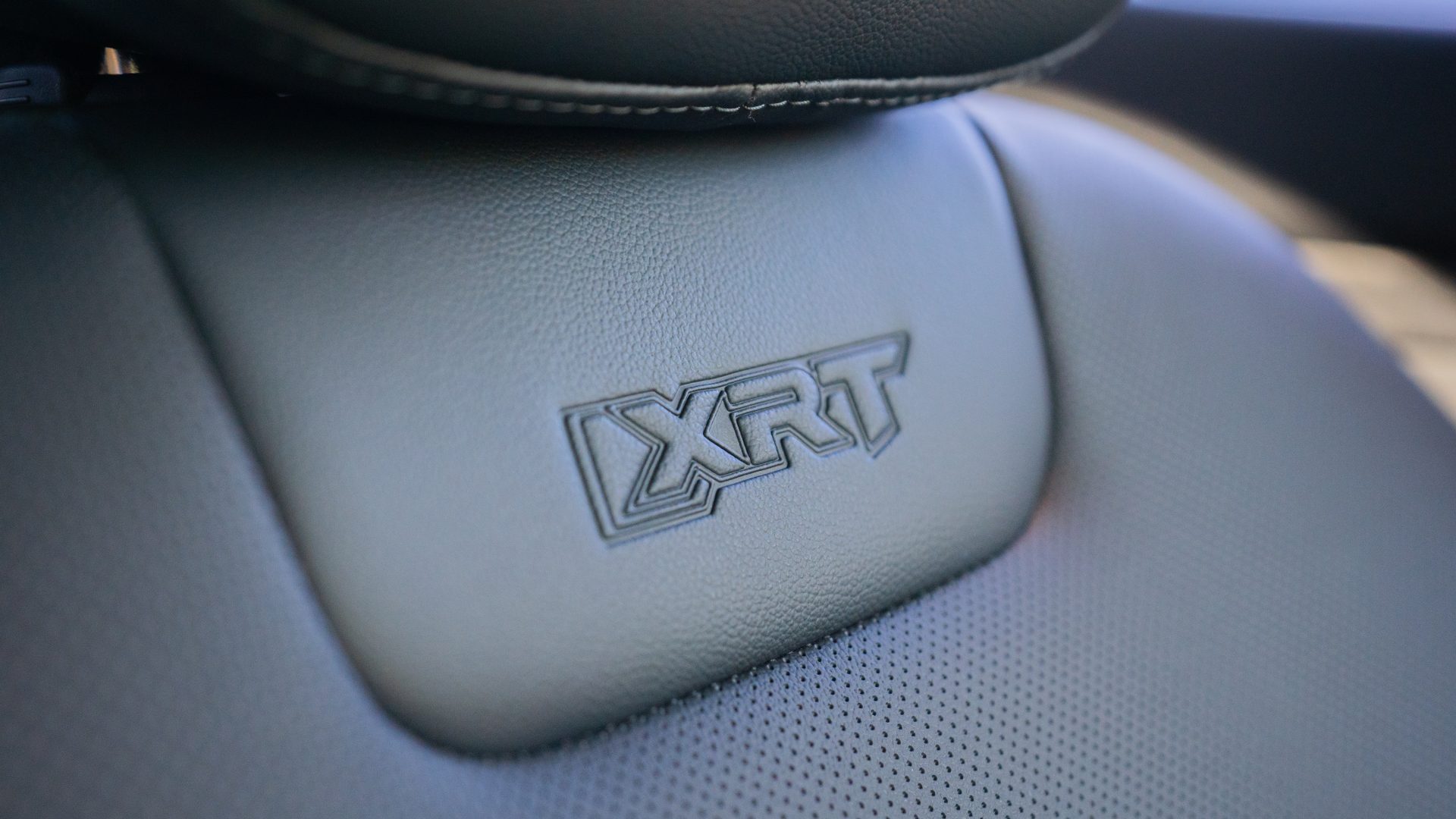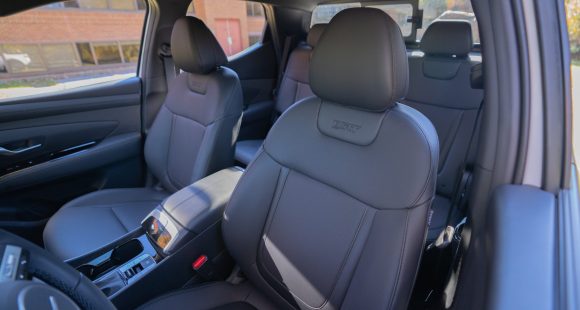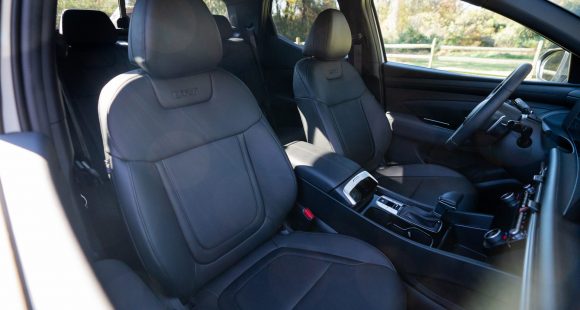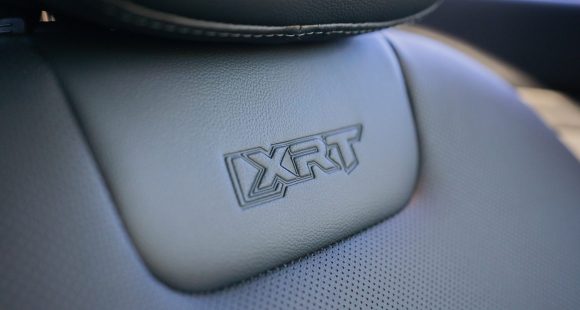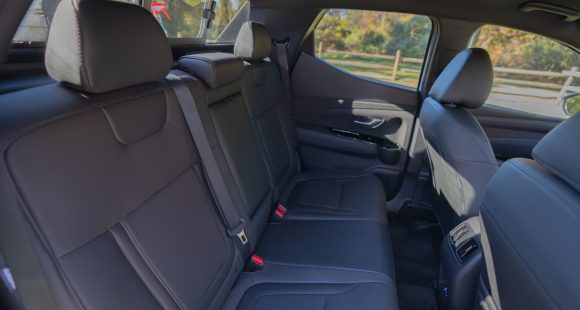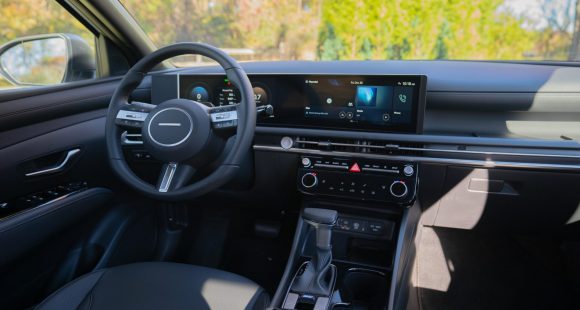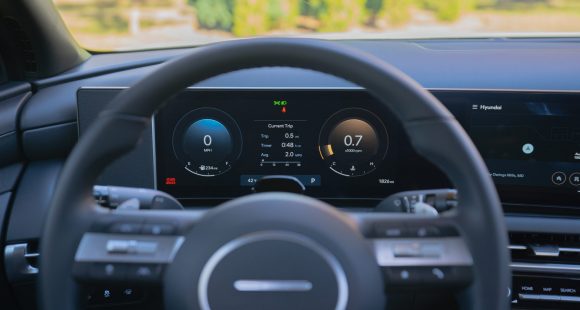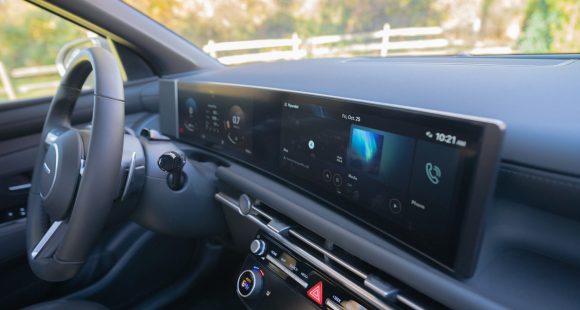2013 Cadillac ATS
Cadillac has already proven that it can build a top notch sport sedan and coupe with the CTS. But, being about the size of a BMW 5-series, the CTS is still too large and heavy for core sport sedan enthusiasts who prefer rides like the BMW 3-series, Audi A4, and Infiniti G. Well, it took a while but the all-new Cadillac ATS has those rivals squarely in its sights. So let’s see just how true Cadillac’s aim really is.
We’ll just pretend that the Cimarron never happened, and call the 2013 ATS Cadillac’s first compact sedan. It certainly is their first compact luxury-sport sedan. It’s hard to believe that a prestige brand can survive as long as Cadillac has without a worthy entry-level model. But, more than that, the rear-wheel-drive ATS looks to have the goods to go toe-to-toe with the most hallowed of all sport sedan benchmarks, the BMW 3-series.
We sure had a blast sliding this lightweight, expertly balanced Caddy around Atlanta Motorsports Park. The ATS makes you believe you’re in total control, although you know in the back of your mind, there’s a lot of ones-and-zeros helping you go fast. It’s definitely a driver’s car. The available limited-slip rear really helps get the power down whether around curves or in a straight line. On that, the ATS is not one-size-fits-all when it comes to power. There are three choices, one more than most rivals. From the 2.5-liter I4 in the base and Luxury models, to the brut in the line up, the CTS’s 3.6-liter V6 found in the Premium model. But our favorite, and likely the buyer’s too, is the Performance model’s all-aluminum, Direct Injection 2-liter turbo, with its 272-horsepower, 30 more than the 328i, and 260 pound feet of torque. Good for a 0 to 60 run of a respectable 5.7 seconds.
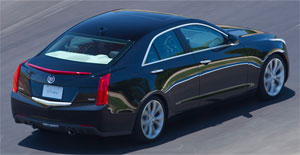 That great power is then perfectly balanced with good fuel economy at 22-City, 32-Highway, and 26 Combined. All engines don 6-speed automatic transmissions with manual shift, while the 2-liter Turbo offers a sport sedan pre-requisite 6-speed manual. While “purists” will insist on the manual, the auto is plenty responsive, and suited us just fine.
That great power is then perfectly balanced with good fuel economy at 22-City, 32-Highway, and 26 Combined. All engines don 6-speed automatic transmissions with manual shift, while the 2-liter Turbo offers a sport sedan pre-requisite 6-speed manual. While “purists” will insist on the manual, the auto is plenty responsive, and suited us just fine.
Length and wheelbase put it right amongst the competition, but at 3,400-pounds it’s lighter than most of them, thanks to extensive use of aluminum and even magnesium. Front suspension starts as typical MacPherson strut, but replaces the usual wishbone with twin ball joints and lower control links. The rear is an all-new 5-link design. Our ride’s FE3 Performance Suspension adds the limited slip rear and driver adjustable Gen 3 Magnetic Ride Control that really pulls it all together. There is electric variable steering assist, and we have no complaints as there’s a sweet amount of feedback through the wheel.
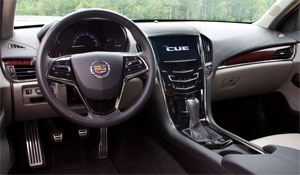 The front end is smooth. Narrow, vertical headlights with available LED accents, flank a broad grille with active shutters, accentuating width. The rear proudly features Cadillac hallmarks such as vertical LED tail lights and large wreath and crest, while nicely integrated exhaust tips add a touch of modern. Inside, there is an ultra-modern yet familiar Cadillac look. Our Performance model features sporty aluminum trim, though wood is available elsewhere in the lineup. And Cadillac’s new CUE proximity touch interface is also standard in all but the base car. We love the look and feel of CUE when sitting still, but moving, like all such systems, you need to use the best-yet voice activation to avoid too much distraction. Much like the larger XTS, gauges are a high-tech display, with a multitude of configurations. Overall interior dimensions are similar to the 3-series. That means a fairly intimate front cabin but with plenty of legroom. The rear seat in the ATS, however, is a little tight even for a sport sedan. And, the trunk is downright small at 10.2 cubic-feet.
The front end is smooth. Narrow, vertical headlights with available LED accents, flank a broad grille with active shutters, accentuating width. The rear proudly features Cadillac hallmarks such as vertical LED tail lights and large wreath and crest, while nicely integrated exhaust tips add a touch of modern. Inside, there is an ultra-modern yet familiar Cadillac look. Our Performance model features sporty aluminum trim, though wood is available elsewhere in the lineup. And Cadillac’s new CUE proximity touch interface is also standard in all but the base car. We love the look and feel of CUE when sitting still, but moving, like all such systems, you need to use the best-yet voice activation to avoid too much distraction. Much like the larger XTS, gauges are a high-tech display, with a multitude of configurations. Overall interior dimensions are similar to the 3-series. That means a fairly intimate front cabin but with plenty of legroom. The rear seat in the ATS, however, is a little tight even for a sport sedan. And, the trunk is downright small at 10.2 cubic-feet.
On the street, the ATS is very composed and super stable. More than one of our staffers felt the need to constantly remind themselves that they were driving an American made sport sedan. The 2-liter turbo has plenty of guts, little turbo lag, and likes to be revved; yet it remains quiet and smooth as you should expect from a luxury oriented brand. All-wheel-drive is available on all but base and luxury models. ATS pricing begins at a very reasonable $33,990, but we expect most will go out of the door closer to 40-grand.
Cadillac has hit the compact sporty four-door bullseye with the 2013 ATS. Now, that doesn’t mean hordes of 3-Series fans are going to trade in their twin-kidneys for a wreath and crest. But, it does mean Cadillac is now a member of a very exclusive club. And, with a V-Series and maybe even a coupe to follow, the ATS looks like a lot more than just a splash in the pan.
Specifications
- Engine: 2-liter turbo
- Horsepower: 272
- Torque: 260 lb-ft.
- 0-60 mph: 5.7 seconds
- EPA: 22 mpg city/ 32 mpg highway
2025 Porsche Taycan Turbo GT
It’s A Turbo GT With No Turbos Or Even An Engine
In an era when even mass market EVs have mind-bending acceleration, how do performance-minded brands such as Porsche stand out? Well, you take things to an even higher level of road-going insanity. Hold on for this one! The Porsche Taycan Turbo GT just changed the game again.
When the original Porsche Taycan arrived for 2020, it did not disappoint. We blasted the Turbo S version to 60 in 2.8 seconds and hustled that hefty Hoss around Roebling Road Raceway with 911-like proficiency. None of that was enough for Porsche. So, for 2025, the Taycan gets more range, more style, more tech, and of course it does it all faster than before too. And that’s before we even get to this Porsche Taycan Turbo GT which is new to the lineup.
For our return trip to Roebling Road, there was a threat of a major winter storm about to impact our track time, so we wasted none of it, hitting the track early and often. And it’s still amazing how this big battery on wheels can feel so Porsche like. No other brand has been able to accomplish a similar feat. We laud BMW for even coming close with the i4, but here you get the full capable and confident Porsche experience; even the brakes feel incredibly natural and powerful, ceramic brakes are standard with the Turbo GT.
Having said that, it remains a very heavy vehicle, so while you’re hustling it around the track it does tend to feel more like work than fun. Many EVs dial back the power as soon as you get up to speed, but here in the Turbo GT, it never seemed to let up, building to the point we reached over 170 mph on Roebling’s front straight, and the way it powers out of corners is otherworldly.
Now, while it does absolutely shred on a racetrack, it really feels best just high-speed sweeping your way through life on some scenic roads through the countryside. This Turbo GT’s 760-kW dual-motor setup cranks out 1,019 horsepower and 914 lb-ft of torque with Launch Control, which allows for sprinting to 60 in 2.2 seconds and clearing the quarter-mile in less than 10. But alas, that winter storm arrived and covered the track in snow before we got a chance to verify that.
You get the full capable and confident Porsche experience.
All Taycans get a new rear motor for ’25, along with updated software and improvements to the cooling system. And guess what? It charges faster too, now accepting up to 320 kW, getting it to 80% in as little as 18 minutes. There’s a 30% boost to the energy capture from regen braking as well, now up to 400 kW. What the Taycan desperately needed was more range, because who wants all this fun to ever stop; and it has been increased by as much as 35% throughout the lineup, now delivering as many as 318 miles; 276 for this Turbo GT.
The Turbo GT features a unique front splitter and active rear spoiler, but all Taycans get revised styling for ’25 including upgraded lighting and a revised front clip that both improves aerodynamics and accentuates the Taycan’s substantial width. All wheels have been aerodynamically optimized as well.
Things inside look mostly the same, but they have improved the functionality of their multimedia setup, moved some controls around, and provided more standard content. It’s a borderline luxury car experience as far as amenities and tech go, yet it still has a purposeful feel to it; and whether things are covered in Race-Tex or real leather everything looks and feels great. Gauges are of course all virtual now, but they can still have a traditional look if you prefer. You really have to duck down to get into the rear seats, but space is plentiful; and with a pair of trunks, there’s abundant luggage space too.
Using 41 kilowatts of electricity for every 100 miles, the Turbo GT earns a fair Efficiency Rating. There are now more options than ever across the Taycan lineup, and that’s even before you even get to Cross Turismos and Sport Turismos. So, while this Turbo GT may cost $231,995 to start, you can get largely the same experience for as little as $101,395 for a base Taycan.
The 2025 Porsche Taycan Turbo GT is more than just a fantastic EV; it’s a great car period, and even a terrific Porsche. With the recently released Macan Electric SUV and the upcoming Boxster and Cayman EVs, more than any other brand, Porsche is giving us reasons not to fear the electrified future.
Specifications
As Tested
- Motor Setup: Dual Motor
- Battery Size: 105 kWh
- EPA Range: up to 276 miles
- Horsepower: 1,019
- Torque: 914 lb-ft
- 0-60 mph (est.): 2.2 seconds
2025 Hyundai Santa Cruz
Hyundai’s Trucklet Gets A Lot Techier And A Little Truckier
Small trucks are once again a big deal here in the U.S., with more options to choose from than we’ve had since the 1980s heydays, including newcomers like this Hyundai Santa Cruz. And just like the Hyundai Tucson crossover that it’s based on, the Santa Cruz gets some major updates for 2025. So, it looks like it’s time for us to do some more tiny truckin’!
The Hyundai Santa Cruz pickup truck, and the Hyundai Tucson compact utility that it’s based on, get some significant updates for 2025, mostly revolving around style and tech. So, while our focus here is on the Santa Cruz, just know that most of what you see also applies to the Tucson.
The biggest changes happen inside where the Santa Cruz adopts Hyundai’s curved panoramic display that puts the 12.3-inch driver display and 12.3-inch infotainment screen into a single housing that stretches from behind the steering wheel to over the center stack. And while the center stack itself remains relatively minimal, they’ve redone the climate controls and actually added a few more physical buttons and dials back in. There’s also a better-looking steering wheel with a Driver Attention Sensor behind it; and while the Tucson moved its gear selector to the column, the Santa Cruz keeps its beefy old school shifter right there on the console. That, combined with an overall feel that’s not quite as open as the Tucson, goes a long way towards helping this trucklet feel more truck-like.
XRTs have a Surround View Monitor, Blind Spot Monitoring, and some branded logos. Rear seat room is more plentiful than you’d think seeing it from the outside, but you do sit very upright, and the seats themselves are not very comfy.
Exterior changes center around the usual new grille and wheel choices, but the off-road-inspired XRT gets a tiny bit more serious, featuring a unique front fascia with added tow hooks and a tidied-up undercarriage for better approach angles; plus, exclusive 18-inch wheels with all-terrain tires. No changes to the integrated 4-foot bed with all trims getting storage cubbies on the side of the bed as well as underneath the floor. The integrated bed cover comes with XRT and above or is available in SELs as part of an added Activity package which also adds a sliding rear window.
[It] is certainly one of the best riding vehicles around with a bed.
The Santa Cruz is certainly one of the best riding vehicles around with a bed, nothing rough or tumble here. In XRTs, you will hear a little more road noise from the more aggressive tires, but it’s far from being annoying. And the Santa Cruz’s size makes it very easy to whip in and out of parking spaces.
Nothing changes mechanically; that means a standard 191-horsepower, 2.5-liter naturally aspirated I4 engine in SE and SEL. While XRT and Limited get the turbocharged version of that engine with 281 horsepower, 311 lb-ft of torque, plus standard all-wheel drive. AWD is available on SE and SEL for $1,500. The turbo engine gets a unique dual-clutch transmission which gets an added tow mode for ’25, while the non-turbo works with a traditional automatic; both are eight-speeds. Max tow rating is 3,500 lbs. with the standard powertrain and 5,000 lbs. with all-wheel drive.
After towing our crew to Mason Dixon Dragway, the turbocharged Santa Cruz XRT delivered us to 60 in 6.6 seconds, about half a second slower than what we achieved back in ’22 with a Limited. Full power was a little late to arrive, but once it showed up, it was ready to get to work, providing steady power the whole way down the track. Our best quarter-mile time was a 15-flat at 96 mph. At wide open throttle, DCT shifts were smooth with no power loss moving through the gears, but it does still stumble a little at slower speeds around town.
The handling experience with the XRT was also different from Limited, as the off-road tires struggled to get a good grip on the pavement when we pushed hard; leading to oversteer and more roll than we remember. There was great feel and feedback coming from the brakes in our panic braking runs however; also, consistent fade-free stops from 60 in just 105 feet.
Government Fuel Economy Ratings are 19 City, 27 Highway, and 22 Combined; we averaged a good 23.1 mpg of Regular. That’s an average Energy Impact Score; consuming 13.5 barrels of oil annually, with CO2 emissions of 6.7 tons. Starting price is a low $30,100, but things get much more serious for the XRT which starts at $41,600, though that’s still well below the average transaction price for a pickup truck these days.
So, until Subaru brings back the Brat or Baja or something similar, the 2025 Hyundai Santa Cruz will remain as the most car-like “truck” you can buy. For purists, that’s an absolute turn-off, but for a lot of others, it’s exactly what they desire.
Specifications
As Tested
- Engine: 2.5-liter turbo-4
- Transmission: 8-speed DCT
- Horsepower: 281
- Torque: 311 lb-ft
- EPA: 19 City | 27 Highway | 22 Combined
- 0-60 mph: 6.6 seconds
- 1/4 Mile: 15.0 seconds at 96 mph
- Braking, 60-0 (avg.): 105 feet
- MW Fuel Economy: 23.1 mpg





































